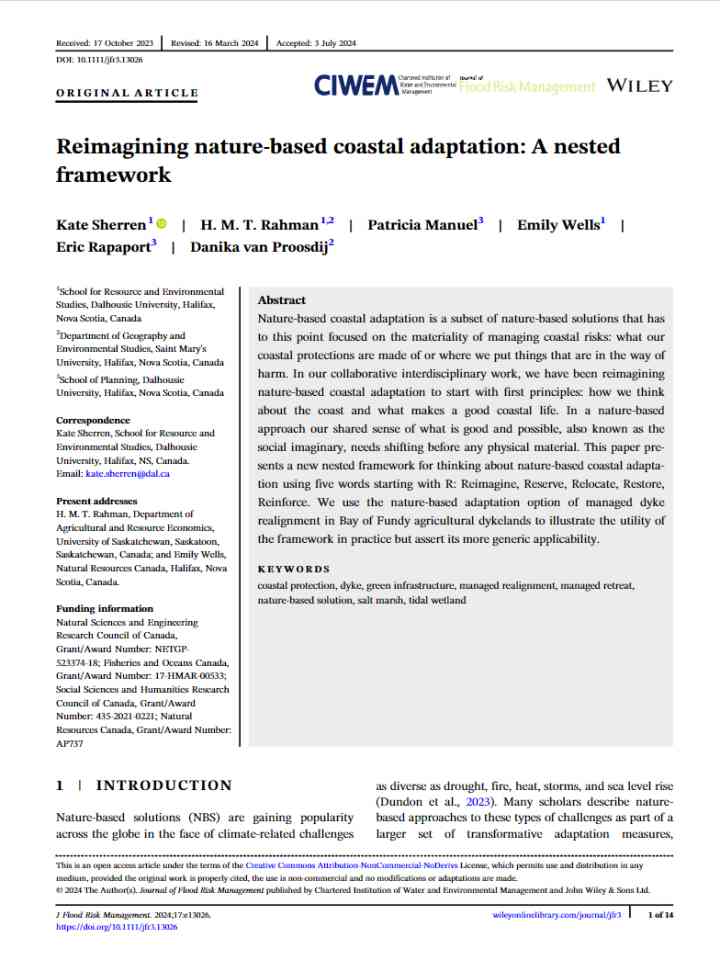Reimagining nature-based coastal adaptation: A nested framework
This paper presents a new nested framework for thinking about nature-based coastal adaptation using five words starting with R: Reimagine, Reserve, Relocate, Restore, Reinforce. Utilizing the nature-based adaptation option of managed dyke realignment in Bay of Fundy agricultural dykelands, this study illustrates the framework's utility in practice and asserts its more generic applicability. Nature-based coastal adaptation, a subset of nature-based solutions, has focused on the materiality of managing coastal risks: what current coastal protections are made of or where objects that impede harm are placed. In collaborative interdisciplinary work, nature-based coastal adaptation has been reimagined to start with first principles: how to think about the coast and what constitutes a good coastal life. In this nature-based approach, the shared sense of what is good and possible, known as the social imaginary, needs shifting before any physical change.
The 5R framework underscores the importance of reflecting on and adjusting perspectives on the relationship with nature and one another before developing coastal solutions if the aim is for these solutions to be effective, just, and lasting. It is critical that the order of actions in nature-based coastal adaptation progresses from reimagining to a combination of reserving, relocating, and restoring, with reinforcement as a final option, rather than the reverse. Reactive thinking is not creative thinking, and thus it is ideal if processes of reimagination occur proactively, outside of an emergency. The trajectory of worsening and repeat emergencies begins to shift thinking and cultural acceptability towards making space for coastal dynamism and new climate regimes. The 5Rs should minimize the risks that need to be addressed through maladaptive risk-sharing products and also avoid leaving the most vulnerable to fend for themselves.
Explore further

